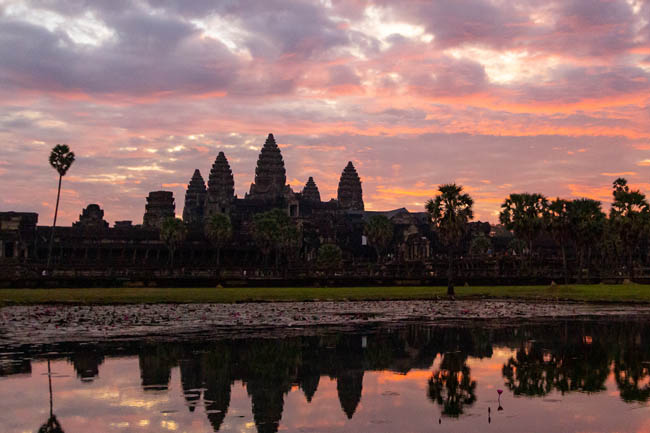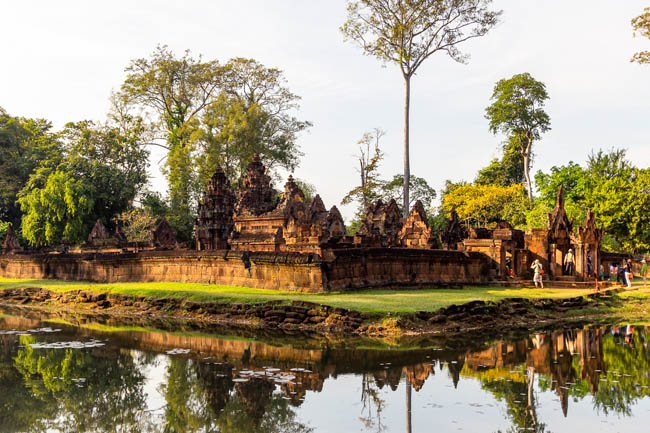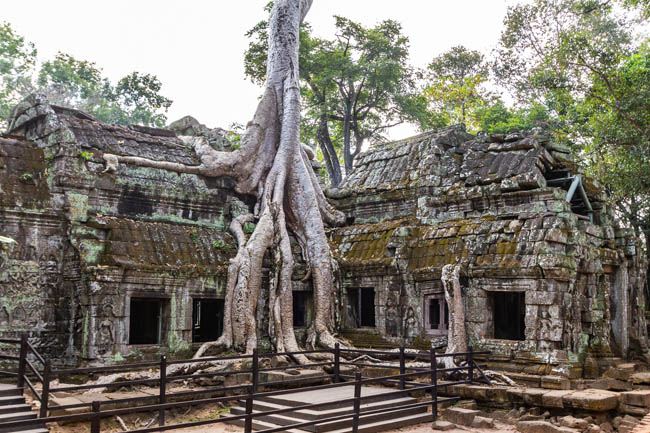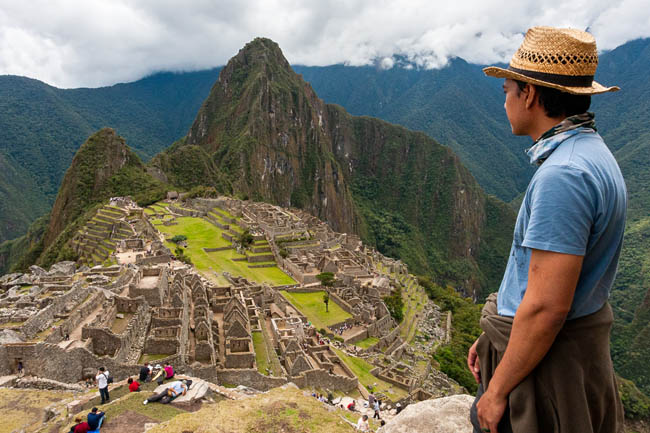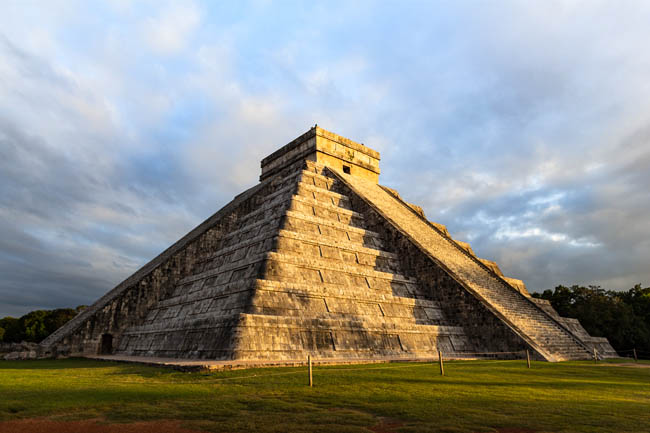CAMBODIA
BAYON
ប្រាសាទបាយ័ន
December 2014 • Canon 60D camera
UNESCO World Heritage site
Angkor
After visiting Angkor Wat this morning and Banteay Srei this afternoon, our final temple of the day was Bayon ប្រាសាទបាយ័ន. The sun was beginning to set as we briefly stopped at Victory Gate to take some photos. One of five gates, this is the second most visited and most interesting of the gates around Angkor. It was the first glimpse of what would come at Bayon temple: giant stone faces. When we arrived at Bayon, it was almost empty of tourists.
From a distance, it looked like a pile of bricks. As I got closer, I could start to make out one or two giant faces on the towers, along with the intricate details on the walls. Bayon is famous for the architectural display of giant stone carvings of faces which dominate the temple skyline. It was built by King Jayavarman VII, the last of the great Khmer Kings in the 12th Century, some 100 years after Angkor Wat.






The temple has three levels. The ground level is mostly pillars and bas–reliefs carvings on the walls depicting historical events. The second level has more bas–reliefs but this time depicting mythological events. The third level is home to the famous stone face towers. With 200 faces staring at you, it is thought that the faces were a depiction of either King Jayavarman VII or the Bodhisattva of compassion called Avalokitesvara or Lokesvara. The latter being the most frequently cited.
The sun was now setting and so the orange of the sun was hitting the temple, creating some wonderful shadows and colours on the faces. Channy, our tour guide, had saved this temple for the end of the day—exactly for the opportunity to take photos of the sunset at the temple.









Did you know...
Bayon was originally built as a Buddhist temple. It was changed to a Hindu temple when King Jayavarman VIII reverted the official Khmer religion, back to Hinduism in the 13th Century.






















